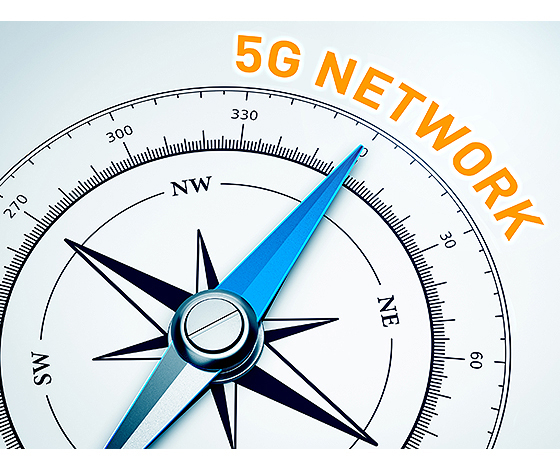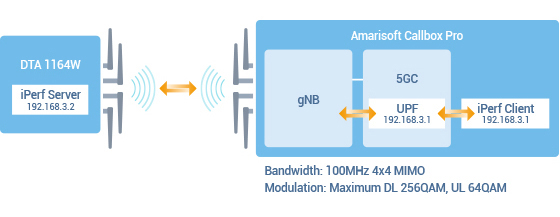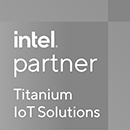Explore All Possibilities In the 5G Era with NEXCOM’s
DTA 1164W
The Trend
Global pandemic has a long-lasting effect on society, as it has changed the way we communicate in a substantial scale. When people can’t travel around and meet face to face, the surge in demand for connectivity, wired or wireless, fixed or mobile, become vital in our daily new norm. 5G broadband comes just in time to accommodate the huge volume of data traffic over IT networks. 5G FWA technology is an alternative way to provide broadband with wireless connectivity. FWA does not just replace traditional wired connections, which needs longer time as well as greater investments in cable infrastructure, it also features all of key 5G’s advantages: high bandwidth, high reliability, and low latency.
Greater bandwidth means more people can have con-calls, host webinars, or even watch Netflix or YouTube without interruption, meaning, no more running around checking on the signal bars on your devices. Lower latency enables us to receive information as close to real-time speed as possible, thus, more critical tasks could be carried over to online mode.
As always and inevitably, operators and enterprise professionals are constantly on the lookout for alternatives. Alternatives that are able to bring them the most effective deployment with best budget appliances, coping with the dynamics of fast-changing IT infrastructures we are facing right now.

The Challenge
Traditional CPE does not easily meet 5G network requirement with SDN/NFV features. For services and capabilities based on conventional CPEs are typically through fixed-function proprietary boxes installed on customer premises. Complex to manage, expensive to upgrade, constrained with vendor-specific configurations, these purpose-built hardware are increasing liabilities in a dynamic context where being adaptive and flexible is everything.
uCPE (Universal Customer Premises Equipment) allows network platform suppliers and system integrators to deploy managed services using software driven and virtual network functions, quickly and efficiently. A Software-Defined Networking (SDN) uses a SDN controller to manage interactions between applications and network devices, meaning that all devices are contained in a centralized hub and communications between network devices and network applications are processed abstractly. One of the major advantages of SDN is it enhances network visibility in multi-domain locations and helps network administrators identify as well as eliminate any network blind spots. On the other hand, NFV(Network Function Virtualization) reduces dependency on dedicated infrastructure. A wide range of virtualized network functions such as routers, firewalls and encryptions that used to be performed on dedicated hardware can be deployed as software on top of virtualized servers.
Thus, universal CPE is integrating individual CPEs, such as firewall, router and wireless gateway, into one whitebox, running multiple VNFs. Whereas, when compared with purpose-built appliance, merely offer greater control and flexibility up to a point of connectivity the IT infrastructure allows.
To make things worse, IT infrastructure can be drastically different among urban, suburban, and rural settings within one country, not to mention a whole globe. While IT professionals enjoy the cost saving and efficiency provided by the uCPE, they are now having hard times tackling the ‘generation gap’ which currently exists in cellular networks while providing internet-based services.
NEXCOM Solution
NEXCOM’s latest uCPE, DTA 1164W, is based on Intel Atom® processor C3000 Refresh (Codename: Denverton-R), Network SoC featuring a maximum of 16 GB of DDR4 ECC memory, M.2 SATA 2242 Key M 8GB SSD, supporting six 1GbE RJ45 copper ports and two 1GbE SFP+ fiber ports. Front Ethernet I/O can be optioned for eight RJ45 copper ports instead. Other optional features include 4G LTE or 5G (sub 6G) module through M.2 3042/3051 interfaces, mini-PCIe slots for Wi-Fi 5 & Wi-Fi 6, PoE supporting up to 30W (802.11at) with 72W 54V PoE power adaptor. An option for fanless design based on the same housing is also available for acoustic and/or low maintenance requirement. Futhermore, a TPM 2.0 module can be ordered separately to further boost the resilience against cyberattacks.
NEXCOM’s DTA 1164W has integrated Data Packet Development Kit (DPDK) to optimize processor utilization and network throughput. Through bypassing the OS kernel and hypervisor kernel space, DPDK can significantly improve packet forwarding speed as well as, throughput performance.
Intel® QuickAssist Technology (Intel® QAT) and Intel® Virtualization Technology (VT-x) further enhance the security requirements, which are much needed by IT/OT professionals for secured connectivity and smart manufacturing. DTA 1164W is designed with multiple processor core-count to run virtualization applications in a software-defined network supporting a rich set of open source software and multiple network protocol stacks.
The performance of DTA 1164W was tested in both Non-Standalone (NSA) and Standalone (SA) 5G environments. Non-Standalone (NSA) 5G is the architecture where 5G services are provided without an end-to-end 5G network, but rely on some previous generation (4G LTE) infrastructure. While in Standalone Architecture, devices connect directly to the 5G core network, and do not depend on the 4G network infrastructure.
Upload and download speed test in NSA environment was run by one of The Taiwanese biggest mobile provider Chunghwa Telecom. Test configuration and all of the settings are collected into Table 1, whereas, test topology are shown on Figure 1. Running a signal from DTA 1164W with Speed test (CLI) goes through wireless connection, sending/achieving data to/from Chunghwa NSA Base Station. The maximum speed perfomance of DTA 1164W in Non-Standalone 5G architecture is 149.79 Mbps for uploading and 763.32 Mbps for downloading (Table 3), which meets general requirements for 5G data transmission.
TABLE I
5G NSA TEST CONFIGURATION
|
Items
|
Description
|
|
System
|
DTA 1164W
|
|
CPU
|
C3436L
|
|
Memory
|
8 GB (Transcend)
|
|
OS
|
Ubuntu 18.04.5 LTS 5.4.53
|
|
BIOS
|
G157T004
|
|
Sub 6G Module
|
Thales MV31-W
|
|
Sub 6G Driver
|
Linux-image-5.4.53_dfa1163-1.1.1_amd64.deb
|
|
Sub 6G Module FW
|
T99W175.F0.0.0.5.7.GC.004 1
|
|
Test Tool
|
Speed test (CLI) 1.0.0.2
|
|
Test Server
|
Chunghwa Mobile - Taipei
(id = 18445) |

Figure 1. 5G NSA test topology
SA speed performance test was run by O’Prueba Technology Inc., a spin-off from the reputed Networking Benchmarking Lab (NBL) at National Chiao Tung University (NCTU) in Taiwan, by the use of Amari Callbox and iPerf tool. Amari Callbox is a 5G core network simulator used for functional and performance tests. Whereas, iPerf is an open-source tool designed to test network bandwidth between two network nodes. iPerf allows the generation of TCP and UDP traffic/load between two hosts and can be used for quick measurements of the maximum network throughput between a server (DTA 1164W) and a client (Amari Callbox). For test configuration please refer to Table 2.
TABLE II
5G SA TEST CONFIGURATION
|
Items
|
Description
|
|
System
|
DTA 1164W
|
|
CPU
|
C3436L
|
|
Memory
|
8 GB (Transcend)
|
|
OS
|
Ubuntu 18.04.5 LTS 5.4.53
|
|
BIOS
|
5.13 (G157T006)
|
|
Sub 6G Module
|
Thales MV31-W
|
|
Sub 6G Driver
|
T99W175.F0.1.0.0.8.PN.001
|
|
Sub 6G Module FW
|
T99W175.F0.0.0.5.7.GC.004 1
|
|
Test Tool
|
iPerf Version: 2.0.10
|
|
Test Server
|
AMARI Callbox
|
Testing topology is shown on the Figure 2. Signal from DTA 1164W with iPerf server tool running goes through wireless connection to send/achieve data to/from Amarisoft Callbox, which imitates 5G base station with UPF for package forwarding (IP, TCP UDP) to iPerf client for analysis. Results for DTA 1164W in SA 5G environment are 32Mbps for uploading and 498Mbps for downloading (Table 3), which are just referential numbers and are not defined as top limits.

Figure 2. 5G SA test topology
Attained results confirm that DTA 1164W is ready to be deployed in both 5G NSA and SA networks, making it a perfect choice for the evolving from NSA to SA, a long run uCPE for small and medium businesses.
TABLE III
DTA 1164W SPEED PERFORMANCE RESULTS FOR NSA AND SA 5G ENVIRONMENT
|
Items
|
Upload
|
Download
|
|
NSA (Chunghwa Telecom Base Station)
|
149 Mbps
|
763 Mbps
|
|
SA (O’Prueba)
|
32 Mbps
|
498 Mbps
|
Conclusion
NEXCOM DTA 1164W is designed to offer a rich set of optional features, allowing IT professionals to deploy the boxes across a wide range of deployment scenarios and use cases, including 5G public and private networks.
The Intel Atom® processor C3000R series brings key Intel technology for uCPE. This power-efficient SoC is ideal to be used in a variety of light scale-out workloads that require high density and high I/O integration, covering almost all networking use such as, routers, switches, storage, to security appliances.
Another factor that is rapidly transforming the technology landscape is network edge. With more compute power shifted from central offices (COs) to the SDN- and NFV-enabled architecture, uCPE is the becoming the new focal point to support necessary service delivery, like streaming video, at a sustainable cost. Deploying units enabling services at the edge helps lower load of core networks and enhance experiences of the end user.
DTA 1164W delivers excellent performance per watt and PoE functionality. Wi-Fi 5/6 and 4G LTE/5G together support the agility for multiple connectivity making it easy to meet all requirements of the 5G Era. Its hardware-enhanced security, and flexible cloud access connections meet today’s applications such as smart city, the Industrial Internet of Things and smart manufacturing. NEXCOM’s DTA 1164W is a good solution with the agility for multiple connectivity, high expandability, helping users create a securely connected workplace as well as exploring the possibilities in the 5G era.

- Related Links:
- Achieve Faster AI Insights with NEXCOM FTA 5190 and Xeon® 6 SoC
- NEXCOM Drives Edge AI, Dual 5G, and OT Security Innovation at CommunicAsia 2025
- Browse Other News:
- Urban PET Recycling Reinvented Sustainable Solutions Powered by NDiS B561
- AIEdge-X®80 Leaps Ahead: Power Up TOPS Performance with NVIDIA® Jetson™ Super Mode
- All White Papers News

